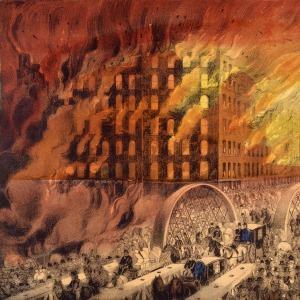
Today in 1871, the Great Chicago Fire began. It would continue to burn into October 9 and 10 before rain fell and helped douse the flames. I spent months studying this historic event for my novel Veiled in Smoke, and learned plenty along the way. Did you know:
1) The fire wasn't Catherine O'Leary's fault.
While it is a matter of historical record that the first sparks began in her barn on DeKoven Street, Catherine was first blamed for starting the fire by reporter Michael Ahern of the Chicago Republican, an accusation that was repeated all over the city. In 1893, Ahern finally admitted he made up the story. In December 1871, the Board of Police and Fire Commissioners held an inquiry into the cause of the fire, which was a nine-day ordeal of questioning more than fifty witnesses. The official report reads: "“Whether it originated from a spark blown from a chimney on that windy night, or was set on fire by human agency, we are unable to determine.” Public opinion had already found the Irish
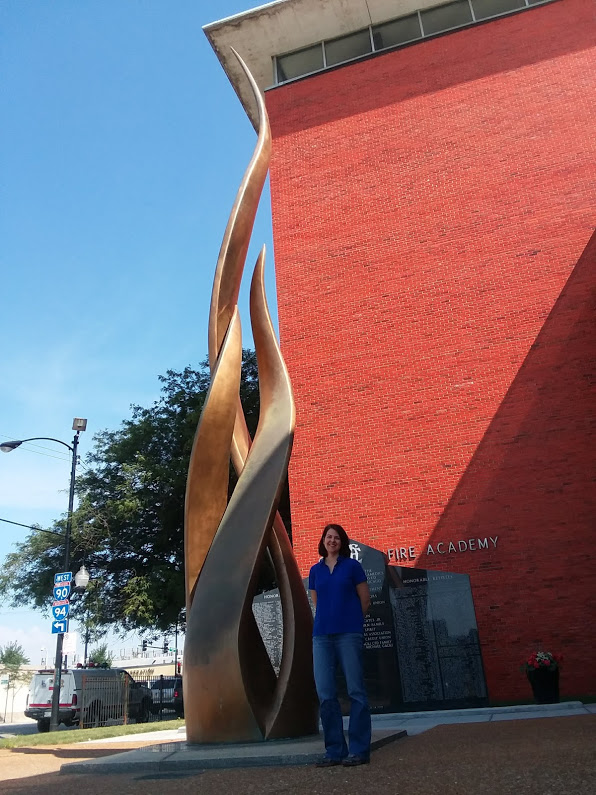
monument to the Great Fire, right at the
site of the first sparks. Fittingly, this is
right outside the Fire Academy.
immigrant woman guilty, however. More than a century later, in 1997, the Chicago City Council passed a resolution exonerating Catherine. For more about the O'Leary Legend, see this Smithsonian article.
2) The firemen were already exhausted from putting out a fire the night before.
Half of the 185-man firefighting force had fought the previous night's seventeen-hour fire in the West Division well into October 8. Then, as was their custom, they unwound by drinking. After only a few hours of sleep, they were called up again for a conflagration that would be worse than they could ever have imagined. And they had to fight it using equipment that had been damaged the night before. There had been no time to repair it.
3) Donations made in sympathy began the Chicago Public Library.
Before the fire, Chicago did not have a free public library. But in sympathy for all that the city had lost (including a draft of Lincoln's Emancipation Proclamation and the rest of the Chicago Historical Society documents), the people of England made a donation of 8,000 volumes for the purpose. The donation prompted Chicago to begin plans for the first Chicago Public Library, which opened on Jan. 1, 1873. The books were housed in a circular water tank that had survived the fire. For more information on the formation of the library, visit this site.
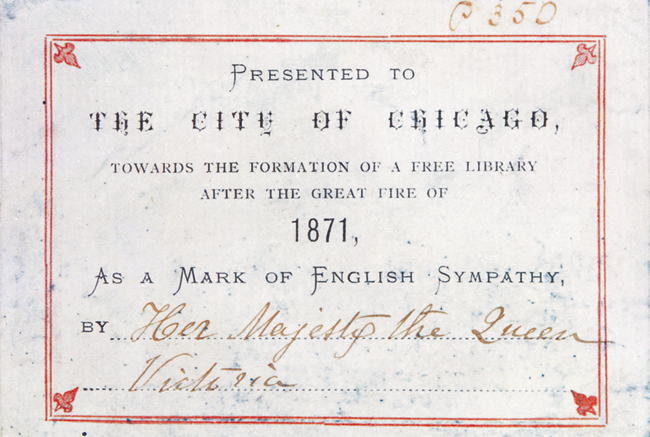
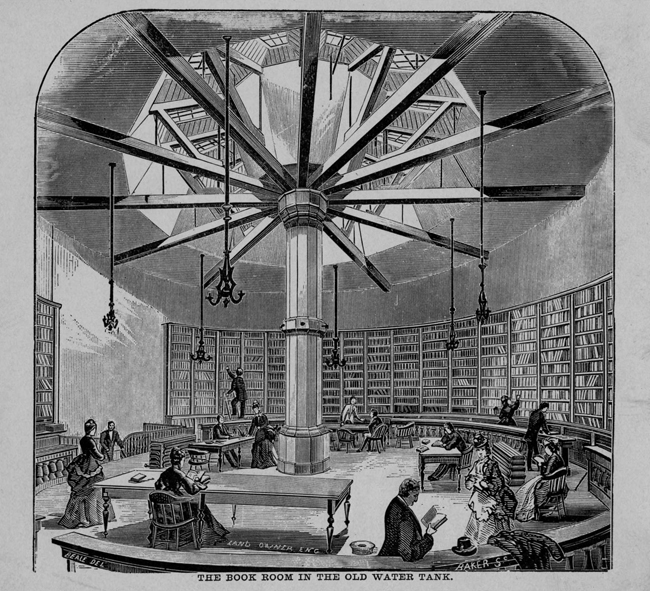
4) Not a single photograph of the actual fire survives.
If anyone took a photograph during the fire, we haven't seen it. Either photographers were running for their lives along with everyone else, or the heat was too much for the equipment, making capturing an image through photography impossible. There are, however, gobs of photographs of the ruins after the fire, and plenty of drawings, lithographs, and paintings offering artists' renditions of the Great Chicago Fire. Below is an 1871 lithograph by Currier & Ives.
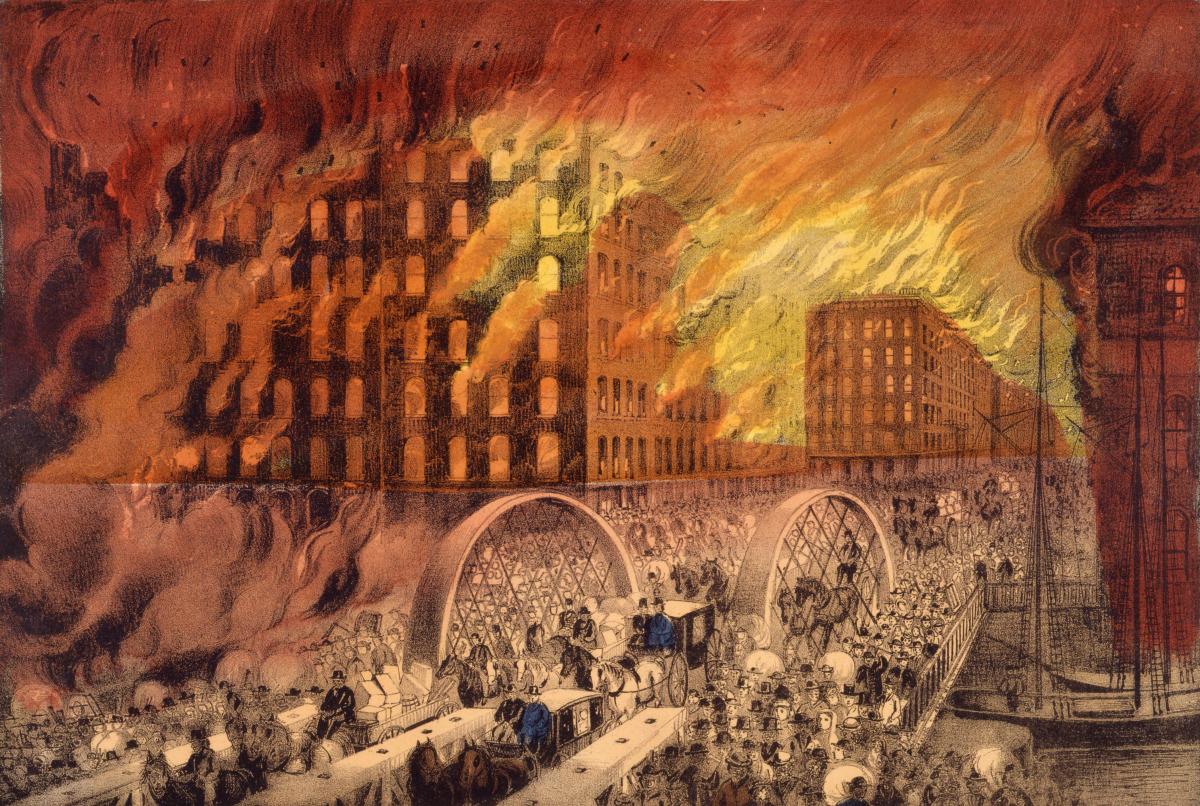
For photographs of the ruins, and of relics found among them, visit my Pinterest board here.
5) The Great Chicago Fire was not the only fire taking place at that time.
The Peshtigo Fire swept through northeast Wisconsin on the same date (October 8, 1871), destroying 1.2 million acres and taking at least 1200 lives. The Chicago fire, by way of comparison, destroyed 2124 acres and claimed roughly 300 lives. On the same day, other fires burned in Michigan at Holland, Manistee, and Port Huron.
For a much more personal look into how one family survived both the fire and the rebuilding, I hope you'll check out my novel, Veiled in Smoke!
"The characters have captivating personalities that drive the plot forward and enrich relationship dynamics. The chaos and fear at that time in Chicago’s history are deftly penned. This is a story of resilience, faith, and the human spirit. An extremely enjoyable, well-researched, and emotionally compelling tale. Recommended!"
~Historical Novel Society

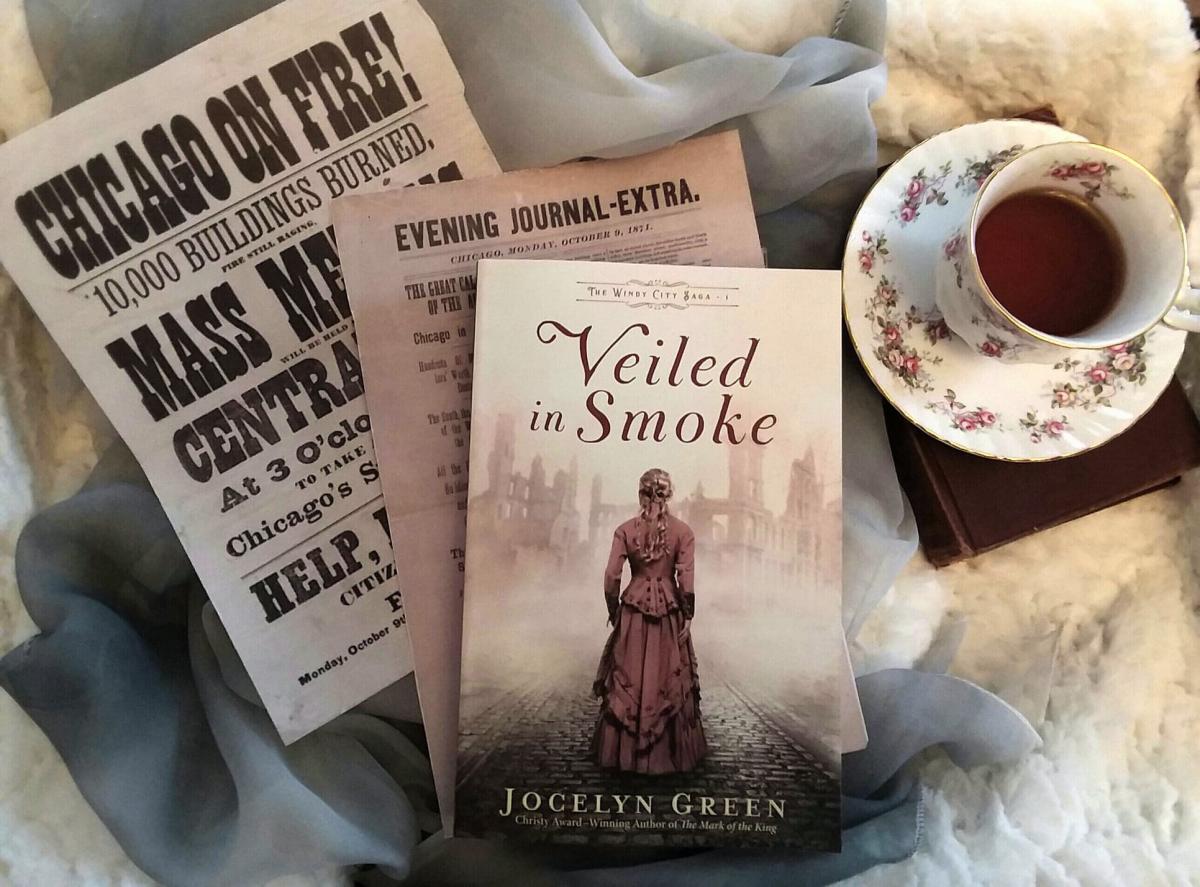

Comments
I look forward to reading
Thanks Kathleen! I know what
So informative and
I'm so glad you enjoyed it!
I'm ready for the next book!
Thank you Joan! I can't wait
Add new comment